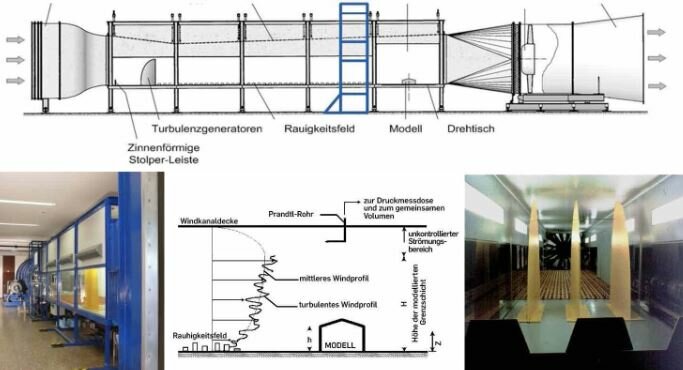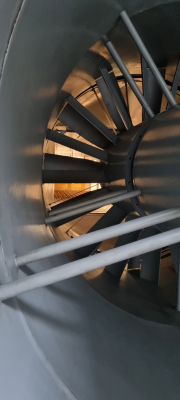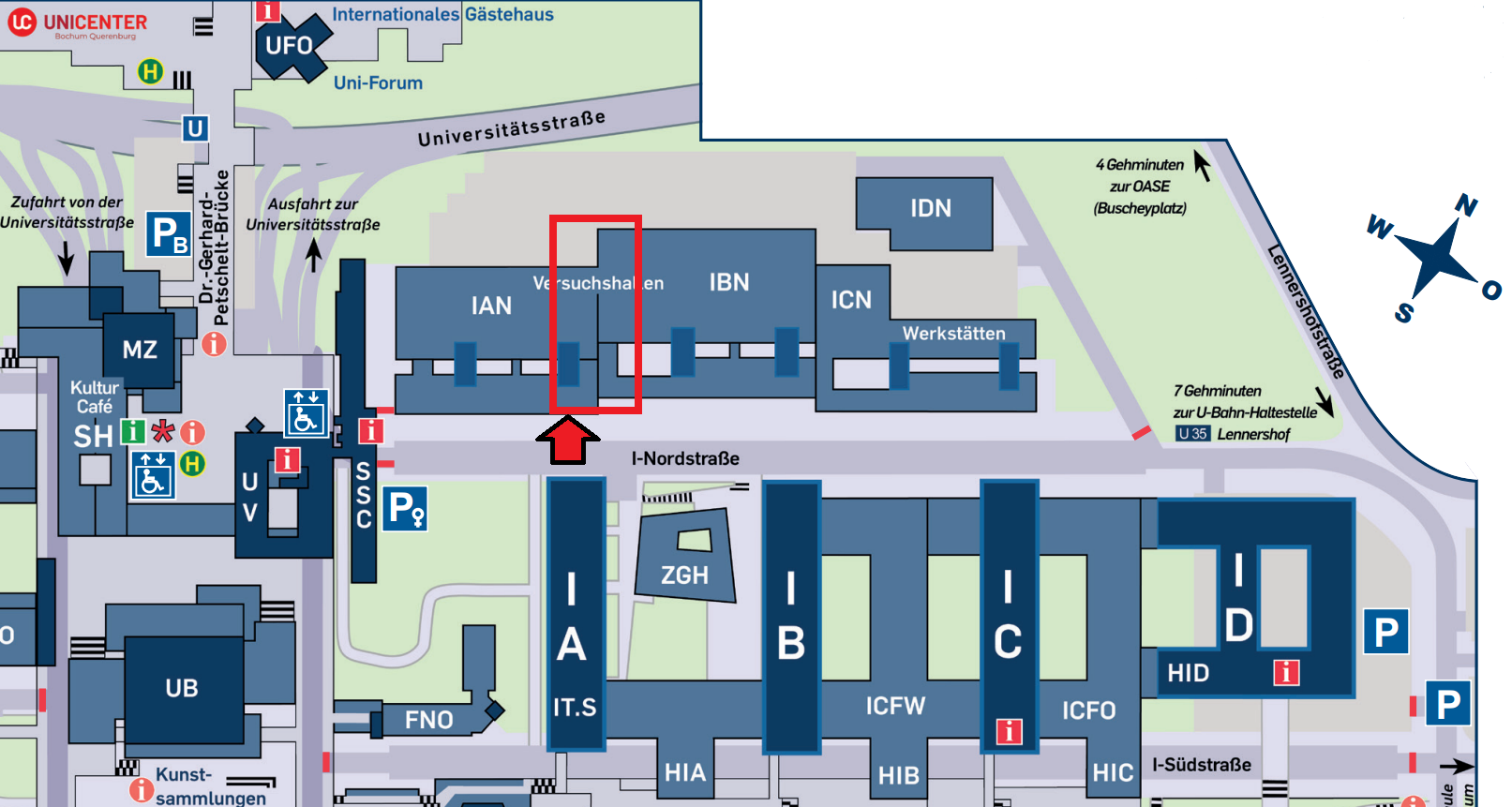The virtual wind tunnel tour from the video can also be controlled by clicking on the button below. You can obtain additional information by clicking on the information fields and videos within the virtual wind tunnel tour.
For many years, wind tunnel tests have been among the most important decision-making aids in solving complicated aerodynamic tasks.
Originally, they were developed for applications in aircraft and vehicle aerodynamics. The wind flow, which is fed e.g. to Formula 1 vehicle models, can be described as very smooth and low in turbulence. In contrast, wind tunnels used for structural investigations are based on a lifelike simulation of the rough and turbulent wind flow simulation of the rough and turbulent atmospheric wind. In the course of many years of research in the field of building aerodynamics, a special type of wind tunnel was a special type of wind tunnel, the so-called boundary layer wind tunnel, has been developed. Here, specific internals control the wind tunnel flow in such a way that the in such a way that the 'laboratory wind' for the model test is reproduced to scale of the storms in nature. Typical buildings investigated in a boundary layer wind tunnel are large structures such as soccer stadiums, bridges, telecommunications towers, high-rise buildings or cooling towers. The object of investigation can be, for example, the determination of the wind load, or also tests on the vibration susceptibility or wind comfort.

Figure 1: Boundary layer wind tunnel in Building IA before relocation.

The research group Wind Engineering and Fluid Mechanics (WIST) represents at the faculty the teaching and research in structural aerodynamics, in the related fields of dynamics of structures - in particular wind excited random vibrations - and probabilistic safety theory as well as in fluid mechanics in civil engineering. It evolved from the working group Aerodynamics in Civil Engineering, which was active in these research areas from 1974 to 2001. WISt operates the boundary layer wind tunnel of the Institute of Structural Engineering of the Ruhr-University Bochum, which was built in 1977 under the leadership of the then owner of the working group, Prof. Dr.-Ing. H.-J. Niemann, and has been successfully maintained and expanded since then, see Fig. 1.
With the atmospheric boundary layer wind tunnel, RUB has a unique laboratory that enables the assessment of wind loads on bridges. This wind tunnel provides a platform for the effective modeling of complex turbulent wind scenarios and has facilities capable of analyzing both externally excited and self-excited oscillations. It is also equipped with sophisticated measurement technology to measure velocities, surface pressures, forces and model oscillations. The Working Group for Wind Engineering and Fluid Dynamics (WIST) has decades of experience in structural aerodynamics and is proficient in performing complex analyses of dynamic wind loads on various bridge components.
Entrance IAN test halls at street level I-Nordstraße
→ Go up one floor in the stairwell
→ Straight ahead through the thick grey door
→ next possibility left, small corridor with grey door.
The wind tunnel is located in the intermediate area of IAN and IBN.
